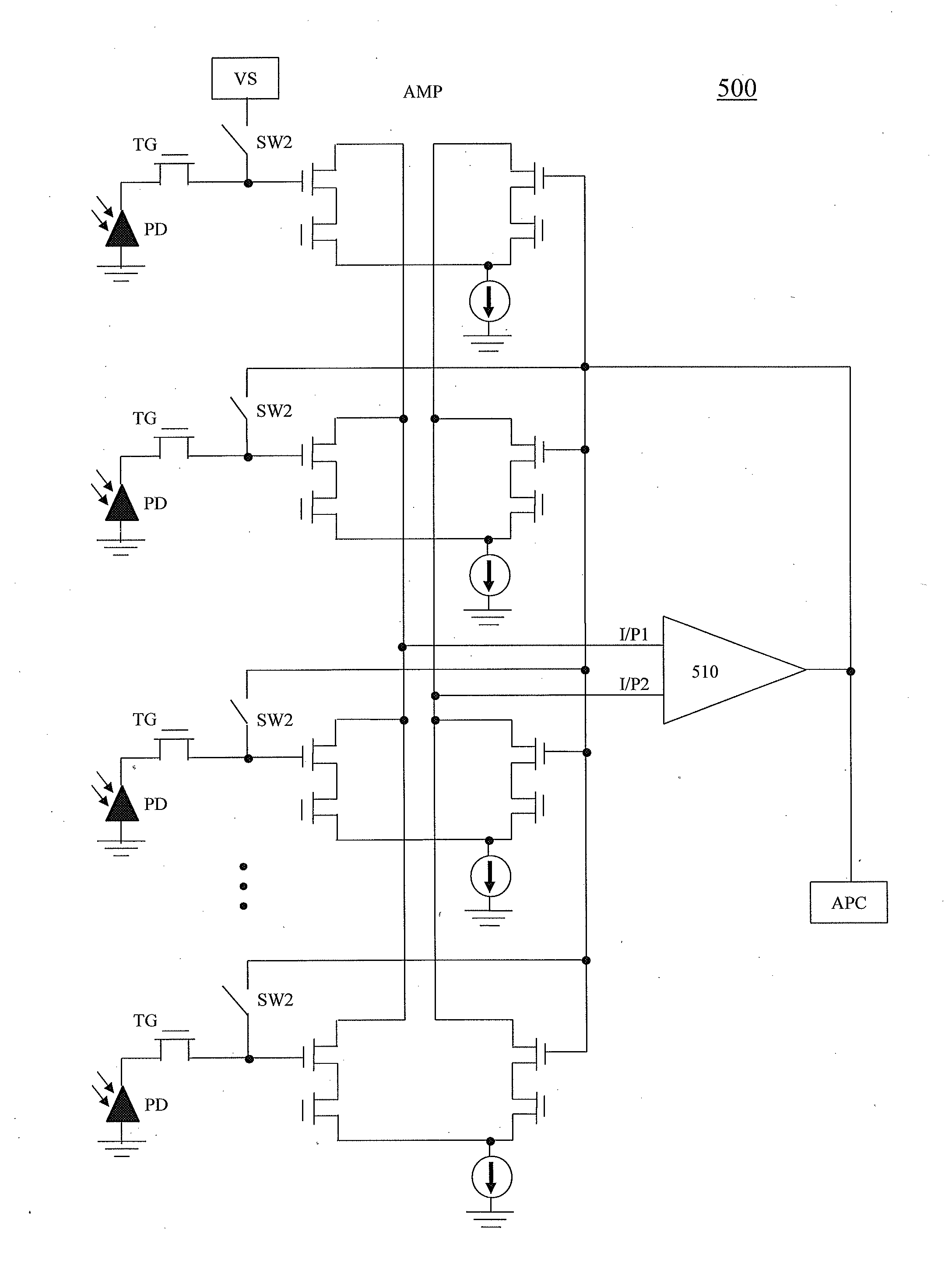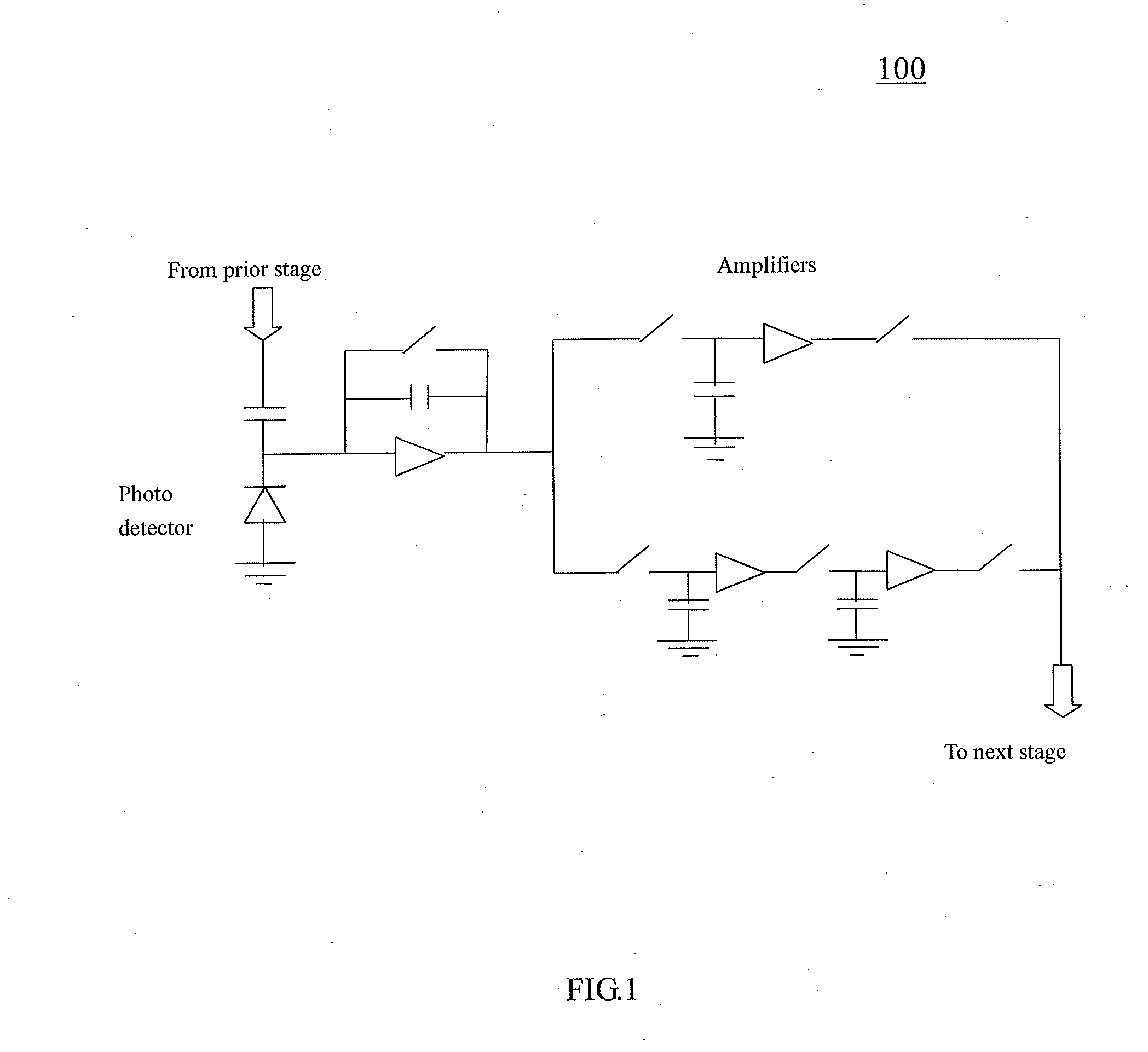Circuit sharing time delay integrator
- Summary
- Abstract
- Description
- Claims
- Application Information
AI Technical Summary
Benefits of technology
Problems solved by technology
Method used
Image
Examples
Embodiment Construction
[0021]FIG. 2 is a circuit diagram of a time delay integrator structure 200 having a shared feedback type operational amplifier circuit 210 according to an embodiment of the present invention. FIG. 3 is a schematic view of clock signals 300 (CL1˜CLn) generated by a set of clock signals according to an embodiment of the present invention. FIG. 4 and FIG. 5 are circuit diagrams of time delay integrator structures 400, 500 equipped with shared active load circuit modules 410, 510. FIG. 6 is a circuit diagram of implementation of the time delay integrator structure 200 having the shared feedback type operational amplifier circuit 210 according to an embodiment of the present invention. FIG. 7 and FIG. 8 are circuit diagrams of implementation of the time delay integrator structures 400, 500 equipped with shared active load circuit modules according to an embodiment of the present invention.
[0022]Referring to FIG. 2, FIG. 4, and FIG. 5, the present invention provides circuit sharing time d...
PUM
 Login to View More
Login to View More Abstract
Description
Claims
Application Information
 Login to View More
Login to View More - R&D
- Intellectual Property
- Life Sciences
- Materials
- Tech Scout
- Unparalleled Data Quality
- Higher Quality Content
- 60% Fewer Hallucinations
Browse by: Latest US Patents, China's latest patents, Technical Efficacy Thesaurus, Application Domain, Technology Topic, Popular Technical Reports.
© 2025 PatSnap. All rights reserved.Legal|Privacy policy|Modern Slavery Act Transparency Statement|Sitemap|About US| Contact US: help@patsnap.com



